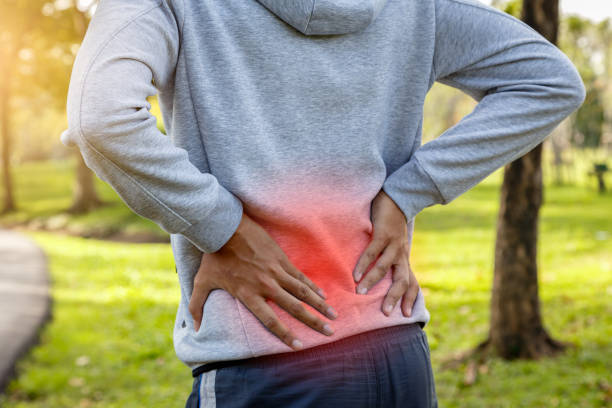What you need to know about back pain and how to avoid it
Research has yet to prove what contributes to back pain but anyone can develop it, even children and teens.

Picture: iStock

Picture: iStock
Subscribe to continue reading this article
and support trusted South African journalism
 SUBSCRIBE
SUBSCRIBE
Back pain is one of the most common reasons people go to the doctor or miss work and a leading cause of disability worldwide.
Most people have back pain at least once. You can fortunately take measures to prevent or relieve most back pain episodes.
If prevention fails, simple home treatment and proper body mechanics will often heal your back within a few weeks and keep it functional for a long period. Surgery is rarely needed to treat back pain. If self-care does not help within two weeks, see your doctor.
In rare cases, back pain can signal a serious medical problem. Seek immediate care if your back pain:

Picture: iStock
Back pain can come on suddenly and last less than six weeks (acute), which may be caused by a fall or heavy lifting.
Back pain that lasts more than three months (chronic) is less common than acute pain. It often develops without a specific cause that your doctor can identify with a test or imaging study.
Conditions commonly linked to back pain include:
• Muscle or ligament strain. Repeated heavy lifting or a sudden awkward movement may strain back muscles and spinal ligaments. If you’re in poor physical condition, constant strain on your back may cause painful muscle spasms.
• Bulging or ruptured discs. Discs act as cushions between the bones (vertebrae) in your spine. The soft material inside a disc can bulge or rupture and press on a nerve. However, you can have a bulging or ruptured disc without back pain. Disc disease is often found incidentally when you undergo spine X-rays for some other reason.
• Arthritis. Osteoarthritis can affect the lower back. In some cases, arthritis in the spine can lead to a narrowing of the space around the spinal cord, a condition called spinal stenosis.
• Skeletal irregularities. Back pain can occur if your spine curves abnormally. Scoliosis, a condition in which your spine curves to the side, may also lead to back pain, but generally only if the scoliosis is severe.
• Osteoporosis. Your spine’s vertebrae can develop compression fractures if your bones become porous and brittle.

Picture: iStock
Anyone can develop back pain, even children and teens. Research has yet to prove what contributes to back pain. However, these factors might put you at greater risk of developing back pain:
• Age. Back pain is more common as you get older, starting around age 30 or 40.
• Lack of exercise. Weak, unused muscles in your back might lead to back pain.
• Excess weight. Carrying too much weight puts extra stress on your back.
• Diseases. Some types of arthritis and cancer can contribute to back pain.
• Improper lifting. Using your back instead of your legs can lead to back pain.
• Psychological conditions. People prone to depression and anxiety appear to have a greater risk of back pain.
• Smoking. This can keep your body from delivering enough nutrients to the discs in your back.

Picture: iStock
The doctor will ask questions and examine your back and assess your ability to sit, stand, walk and lift your legs. These assessments help determine where the pain comes from, how much you can move before pain forces you to stop and whether you have muscle spasms.
They will also help rule out more serious causes of the back pain.
X-rays show the alignment of your bones and whether you have arthritis or broken bones.
MRI or CT scans can generate images that may reveal herniated disks or problems with bones, muscles, tissue, tendons, nerves, ligaments and blood vessels.
Blood tests can help determine whether you have an infection or other condition that might be causing your pain.
In rare cases, your doctor may use a bone scan to look for bone tumours or compression fractures caused by osteoporosis.
Nerve studies (electromyography, or EMG) test the electrical impulses produced by the nerves and the responses of muscles. This test can confirm nerve compression caused by herniated discs or narrowing of your spinal canal (spinal stenosis).

Physiotherapy. Picture: iStock
Most acute back pain gets better with a few weeks of home treatment. Over-the-counter pain relievers and the use of heat or ice might be all you need.
Continue your activities as much as you can tolerate. Try light activity, such as walking and activities of daily living. Stop activity that increases pain, but don’t avoid activity out of fear of pain.
Physiotherapy is the cornerstone of back pain treatment. The therapist can apply a variety of treatments, such as heat, ultrasound, electrical stimulation and muscle-release techniques.
For more news your way, download The Citizen’s app for iOS and Android.
Access to the top content, vouchers and other member only benefits